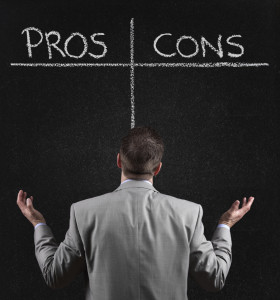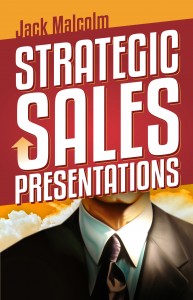Let’s be completely honest with ourselves: sometimes we give gifts to others at least as much to make ourselves look good as to make the recipient happy. For example, when you buy a bottle of wine to give to someone important, you want to get something they will enjoy, but you also want to show your good taste and sophistication.
It’s the same way with books: if there is someone you want to suck up to, maybe your boss’s boss or a prospective client, here are some book recommendations that will meet both goals. They will please the recipient and mark you as an especially discerning and intelligent person at the same time.
Thinking, Fast and Slow, by Daniel Kahneman. Kahneman is one our most important thinkers, who won the Nobel Prize in Economic Sciences for his work, even though he’s a psychologist. This book is both instructive and entertaining, and will help you understand the quirky workings of the human mind. If you’re unsure whether to give this book as a gift, think of what will happen if someone else does before you do.
Originals: How Non-Conformists Move the World, by Adam Grant. Grant is described as a top-rated teacher at Wharton, and this book shows why. There are several reasons you might not want to get this book for someone, the most important one being that it can be dangerous to be perceived as an original thinker, especially within a large organization.
Pre-Suasion, Robert Cialdini. This is the newest book by one of the acknowledged legends of the influence world. Honestly, I didn’t think it was as good as the book which he’s famous for: Influence: The Psychology of Persuasion, but giving it will make you look smart and up to date.
Superforecasting, Philip Tetlock. This book is full of practical ideas to improve your judgment and predictive ability.[1] Using the National Intelligence Council’s 7-point scale, I predict that you are almost certain to impress anyone you give this book to, especially if they think you’ve read it.
How to Fly a Horse: The Secret History of Creation, Invention, and Discovery, by Kevin Ashton. This book will fascinate and impress anyone who works in or with technology, and they might even find creative ways to thank you for it.
Thank You for Being Late: An Optimist’s Guide to Surviving in an Age of Accelerations, by Thomas Friedman. I’m breaking my own rule by recommending a book that I haven’t finished reading yet, but I didn’t want to be late in making this recommendation. If you’re concerned about the state of the world, Friedman will restore your optimism.
P.S. One of the best qualities of each of these books is that they are each so well-written that the recipient will actually read them. So, if you’re going to give one of these, it’s a good idea to buy a copy for yourself and read it!
[1] Although I have to admit I read it and still got the 2016 election wrong.
Next month I will get my renewal notice in the mail for my Dolphins season tickets. My wife and I have had the tickets for almost 30 years, but very year for the past half-dozen or so I’ve struggled with the decision. It should be a no-brainer: I’m unhappy with the performance of the team, don’t see much evidence that it will change soon, and quite frankly don’t enjoy attending the games nearly as much as I used to.
But so far I keep forking out the money, and I blame a mental bias called the endowment effect and its close relations, status quo bias and loss aversion[1]. The endowment effect means that having ownership of something makes us value it more; we ask for more to give something up than we would be willing to pay to acquire it. If I were completely rational, my decision would not be swayed at all by the fact that I already own the tickets. Decisions only carry consequences in the future, so what’s in the past should have no effect at all. If I were not already an owner, and I received an invitation to buy tickets for the very same seats at the same price, would I buy? That should be the question I ask myself. I know the answer is no, but I persist in making the same flawed decision every single year.
The patron saint of scientific persuaders, Daniel Kahneman, ran an experiment once in which students were put into three groups chosen at random. The first group, called “Sellers” were given attractive coffee mugs with the university insignia on them (which they knew were available at the university store for $6), and given the option of selling them at any price they wanted. The second group, called “Buyers”, were given the option of bidding on the mugs at their chosen price. The third group, called “Choosers” were given the option of receiving a mug or a certain amount of cash at their chosen price. Here are the results:
Sellers $7.12
Buyers $2.87
Choosers $3.12
What do the numbers mean? First, most people would not buy a mug for more than $2.87, but if they have one, they would not part from it for less than $7.12. It’s a wonder anything ever gets sold. But the Sellers and Choosers comparison is even stranger, because it’s exactly the same choice! Both groups could go home with either the mug or the cash, but possession of the item made it more than twice as valuable.
Here’s a specific negotiation example of the endowment effect in action. A friend told me about some work done for his organization, in which the architect had gone beyond the original instructions and over-designed the project, leading to unexpected cost overruns. There was an outstanding balance on the original contract of $5k, but the architect then sent an additional invoice for an extra $15,000 of work over what he had agreed to. John called him to protest, but the architect would not listen, so John said, “Listen, I’m getting ready to leave for the airport, and I have a check for $5k I’m going to put in the mail right now, and that’s it. But if you don’t agree, I’ll tear up this check and you won’t get a penny.” The architect asked how much time he had to think it over, to which John replied, “Ten seconds.” He took the money.
When John said he was going to give him $5k, that registered in the architect’s mind as ownership. In this case a bird in the hand was worth three in the bush to him, because a guaranteed $5k trumped a speculative $15k.
Knowing about the endowment effect is useful in selling. If you can get the buyer to take mental ownership of your solution by envisioning what life would be like with it, they are likely to be more tenacious in holding on to it when it comes time to decide. In my own selling, I’m sometimes asked if I can shorten a particular course. Because I won’t compromise on quality by trying to rush things, I say, “Sure. Which modules do you want to take out?” When they try to answer that question, they find it hard to part with the parts they already “own”.
When you think about it, you can see the endowment effect in action almost everywhere, such as holding on to investments too long, keeping long-held opinions long past their sell-by date, sticking to flawed strategies because they are “our way” of doing things, etc. As Oliver Wendell Holmes said:
“It is in the nature of a man’s mind. A thing which you enjoyed and used as your own for a long time, whether property or opinion, takes root in your being and cannot be torn away without your resenting the act and trying to defend yourself, however you came by it.”
Of course, just because it’s irrational, doesn’t mean it’s wrong; without it, the world would be a much more unstable place, divorces would be more common, and so on. Some people would call it loyalty.
So, next month–will I be logical, loyal,, or just plain dumb? Stay tuned…
[1] Or it may be because if I do give up the tickets, and they end up having a great season, I’ll feel foolish. (Although given their track record, that’s not very likely to happen.)
My high school swim coach used to love to tell the story of the old bull and the young bull, standing on a hill overlooking a herd of cows. The young bull says, “Let’s run down there and (do) one of those cows.” The old bull replied, “Let’s walk down there and (do) them all.”
I mention this in this series because so far the implication has been that using lean principles to improve personal work means getting more work done faster. So, when we strive to improve personal productivity, it’s tempting to try to pick up the pace of our work. Common sense tells me that if I want to drive from Point A to Point B, I can save time by going faster. But constantly changing from lane to lane to try to get a momentary advantage may actually slow me down, not to mention that my speed may cause me to be pulled over by the police or cause an accident. By trying to do too much, we run the risk of exceeding natural speed limits that exist for good reasons.
In weapons training, you’re constantly reminded that “slow is smooth; smooth is fast.” This speaks to the importance of flow, which brings us to the connection with lean principles. It is the idea of lining up all steps in the value stream so that they get done in a steady continuous flow with no wasted motions or interruptions. The steps taken to improve flow: focusing on the actual object being worked on (make work visible), removing impediments and rethinking work practices, all take time to implement, but the effort can cut work times in half, according to Womack and Jones in Lean Thinking.
There are limitless ways of taking time before, during and after your work to improve outputs and ultimately speed up cycle times. Here are just a few examples:
Five whys: When we encounter a problem, we want to solve it as quickly as possible so we can keep going on with our work. But if we treat the symptom and don’t get rid of the root cause, we are likely to have to repeatedly solve it. The Toyota technique of asking why five times (the number is not hard and fat) adds time to the process but forces you to think at a much deeper level and may help you uncover and address the root cause, which saves a lot of time (among other things) in the long run.
Thinking slow: I’ve written here before about the two modes of thinking we all use, popularized by Daniel Kahneman as fast, intuitive, System 1 thinking; and slow, rational System 2 thinking. Most times intuition and instant recognition of what to do serves us well, but we’re all subject to built-in biases which can lead us astray. The trick is to know when to slow down and apply careful, deliberate thinking to the problem or task at hand. It becomes particularly important in a fast-changing environment, because we’re more likely to encounter situations that are different from anything we’ve seen before.
For creativity, start fast and end slow: In my own experience, whether writing an article or completing a sales call plan, there’s a tremendous benefit in doing a first draft early and then putting it aside. Flashes of insight seem to come instantly, but actually slowing down can help here as well. Somehow the flashes seem to come much easier when they’ve been incubating in my subconscious for a while. It’s especially helpful in crafting and rehearsing an important presentation; taking the time to space out the rehearsals will spark many more improvement ideas.
Preparation: Investing time upfront in preparation is one of the best ways that slowing down can help you finish faster—and better. That’s no newsflash to anyone reading this, so I won’t waste keystrokes with the usual examples. What is amazing, however, is that preparation can improve outcomes even in situations that would seem to allow no time at all for it, such as in superfast sports activities like returning a serve in tennis or hitting a baseball. Frank Partnoy in his book Wait: The Art and Science of Delay, explains that 500 milliseconds—half a second—elapse from the time a ball leaves the server’s racket to the time the receiver hits it. The first 200ms are required for visual reaction time. This “see” phase is the same for amateurs and pros alike. That leaves 300ms for the actual physical reaction, the “hit” phase. While you or I might be able to raise our racket into the path of the ball during that time, the pros can do the physical part in 100ms. The extra time is used in gathering and processing information, so that they can actually choose their shot. In other words, the ability to go fast at the end allows them time to better prepare.
Delay and persuasion: Since a big part of getting things done is getting others to do what you want done, this precept applies to persuasion as well. In persuasion, we often find that trying to convince someone before they are ready can be counterproductive. Sometimes by slowing down selling you can speed up buying, and vice versa. A buyer who feels rushed may react or shut down entirely. New ideas often take time to gain acceptance. When you’re trying to sell ideas internally, it can be tempting to go straight to the top and get a decision forced on the organization, but good luck implementing it. In negotiations, impatience and hurry can be your biggest liability. As long as time is on your side, you don’t have to accept a bad deal.
Good ideas, like good products, rarely sell themselves. Someone needs to present them in the right way to the right people at the right time, and the three people mentioned in the title above have all had important and useful things to say about how to do that.
In my new book, Strategic Sales Presentations, I’ve made it a point to search for the best ideas from history, science and business and combine them into a unique and powerful approach to strategically sell ideas to high-level decision makers. It’s a skill that will propel your career, regardless of whether you’re officially in sales or just want to sell your ideas to others.
Aristotle was the original—and still the best—presentations trainer in history. Classical Athens was a direct democracy, which meant that if you wanted to get something done, or defend yourself from a lawsuit, you had to speak directly to an assembly of citizens. There were no lawyers, lobbyists of PowerPoint; it was just you and your eloquence facing an audience as large as 10,000 strong, so it was important to know how to get attention and sway an audience.
Fortunately in those days you could turn to one of the first presentations trainers. Aristotle wrote the best training manual for speakers—The Rhetoric. His major contribution, which still applies today, is the proper use of three principal avenues of persuasion, logos, pathos, and ethos. He realized that the persuasiveness is a function of both the message and the messenger. The strength of the message depends on appealing to the listeners’ hearts and minds through logic[1] and emotional connection, and the credibility of the messenger is earned by who they are and what they do. In the book you will learn how to choose the right mix of solid evidence, present it compellingly and engagingly, while personally conveying executive presence and credibility.
Fast forward a couple of millennia, and we can use modern science to further refine some of Aristotle’s ideas. Daniel Kahneman, the only psychologist to ever win the Nobel Prize in economics, teased out the complex relationship between two main modes of thinking that audience members apply when listening to a presentation. System 2 is the slow, logical deliberative process that we all admire as the ideal of business decision-making, and System 1 is the rapid, intuitive and unconscious undercurrent of thought that exerts a powerful and sometimes overriding influence on our real-life decisions. Executive decision makers try to be exceedingly rational in making important business decisions, but even they can be influenced by how choices are framed, for example. Even they use shortcuts when the choices become too difficult. For example, Kahneman’s substitution principle states that when a question is difficult to answer (e.g. will this multi-million dollar investment return an acceptable ROI?), they will frequently substitute an easier question (e.g. do I trust this person who is telling me it will?).
Although history and science have a lot to teach us about effective presentations, no one in business will be really convinced until they see how successful business leaders embody the ideas in the book. Jack Welch and Steve Jobs are certainly on anyone’s short list of greatest business leaders of the past fifty years. They teach us that regardless of how strong your solution is, or how prestigious the company you represent, your performance during those critical moments in front of some of the toughest audiences in the world can make a big difference. Their regimen for preparing for important presentations should teach us and inspire us to put in the same painstaking and relentless effort and attention to detail they do.
Besides these important teachers, the book also contains ideas and advice from some people that I consider even more important. A lot of senior executives that I’ve had the privilege of working with have also made valuable contributions to Strategic Sales Presentations, graciously consenting to be interviewed and pass on their perspective. (Although I suspect some of them did it out of self-interest—because they’re tired of sitting through boring, mistake-filled presentations.)
The book closes with a reminder that greatness as a presenter is within your reach, if you’re willing to put in the work. Because he started it, Aristotle also gets the last word in the book: “We are what repeatedly do. Excellence, then, is not an act but a habit.”
[1] Since he also wrote the first book on logic, I guess you could say he was a full-service training provider.






